air
Days of thunder: British military aircraft from Hurricane to Tempest
The UK’s new £2bn fighter aircraft programme, Tempest, was announced at Farnborough International Airshow. As Tempest hovers on the horizon, Callum Tyndall takes a look at what is known about the programme so far, and revisits the history of British military aircraft named after storms.
Unveiled at the Farnborough Airshow in July, the UK’s Tempest is a sixth-generation concept fighter intended to enter service from 2035 and replace the Eurofighter Typhoon.
While critics have been quick to call the project a “pipe dream” and questioned its affordability, the UK Government has already set aside £2bn in its defence budget and ‘Team Tempest’ – a consortium of BAE Systems, Leonardo, MDBA and Rolls-Royce working with the Royal Air Force rapid capabilities office – is busy developing a business case including military requirements, which is expected by the end of the year.
The race to develop sixth-generation fighters is perhaps the primary focus for contesting air superiority at the moment, and the Tempest will require a large amount of flexible capability to take on its competitors. According to early reports, it is not intended to replace the F-35, but rather to complement it. With a larger size and capability to carry more weapons over longer distances, it is expected to offer better air combat and air defence capabilities than the F-35. It may also have optionally unmanned capabilities.
While we wait for the UK’s newest fighter programme to take shape, let’s take a look back over the long history of British military aircraft named after storms.
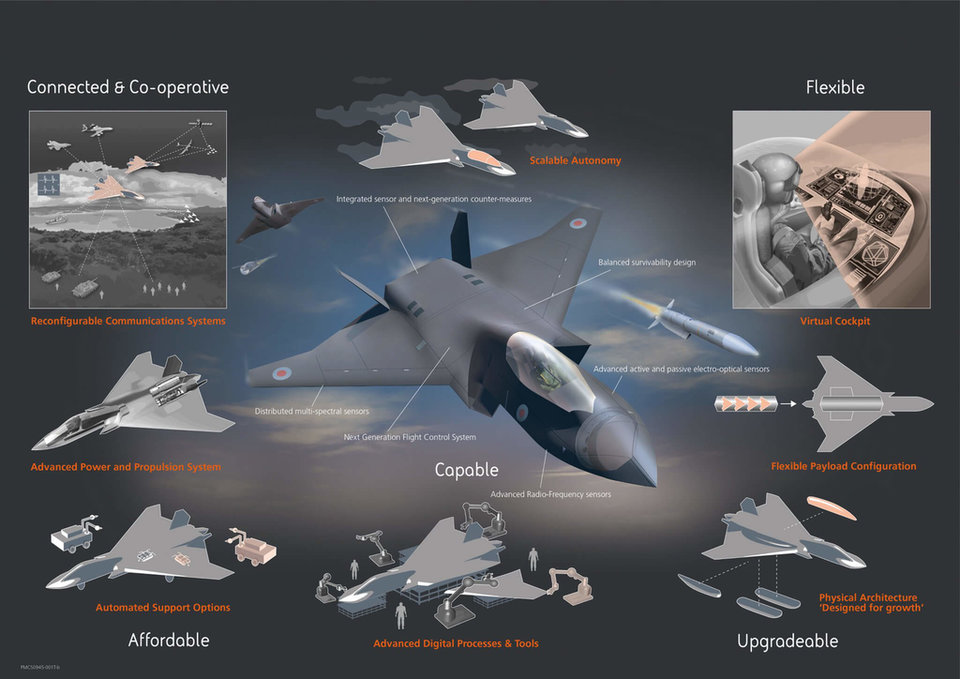
BAE System’s future combat air concept, indicating the technologies likely to be important in the future. Image: BAE Systems
1937-47:
Hawker Hurricane
Designed and predominantly built by Hawker Aircraft, the Hurricane was ordered into production in 1936 and entered squadron service in 1937. Initially arising from discussions of a monoplane derivative of the Hawker Fury biplane, the Hurricane incorporated several innovations that became critical to wartime fighter aircraft, including retractable undercarriage and a more powerful engine. The plane was rapidly procured into service in advance of the Second World War’s outbreak, when the RAF had 18 Hurricane-equipped squadrons.
The Hurricane fought across all major theatres of the war and served a significant role in the Battle of Britain. Despite the Supermarine Spitfire’s greater role in the public consciousness, the Hurricane was in fact responsible for 60% of the losses sustained by the Luftwaffe. The last large-scale use of the Hurricane as a day fighter was over Rakhine State, then the Arakan, in 1943, but the plane saw continued use as a fighter-bomber. By the end of production in 1944, 14,487 Hurricanes had been completed; today, there are just 12 airworthy Hurricanes left worldwide.

R4118, the only Hurricane from the Battle of Britain still flying.
1942-43:
Lockheed P-38 Lightning
Developed for and primarily used by the US Army Air Corps, the Lockheed P-38 Lightning was a piston-engined fighter deployed as the primary long-range fighter of US Army Air Forces in the South West Pacific Theatre until toward the end of the war. French and British forces made a combined order of 667 P-38s in March 1940, yet after the fall of France the British took over the entire order and gave the aircraft the service name "Lightning".
However, various issues arose and in the summer of 1941, an RAF test pilot reported on the plane with a poor assessment. As a result, all but three of the Lightning 1s on order at the time were cancelled. Lockheed initially planned to hold the British to the order but, following Pearl Harbour, all British Lightnings were delivered to the US Army Air Forces.
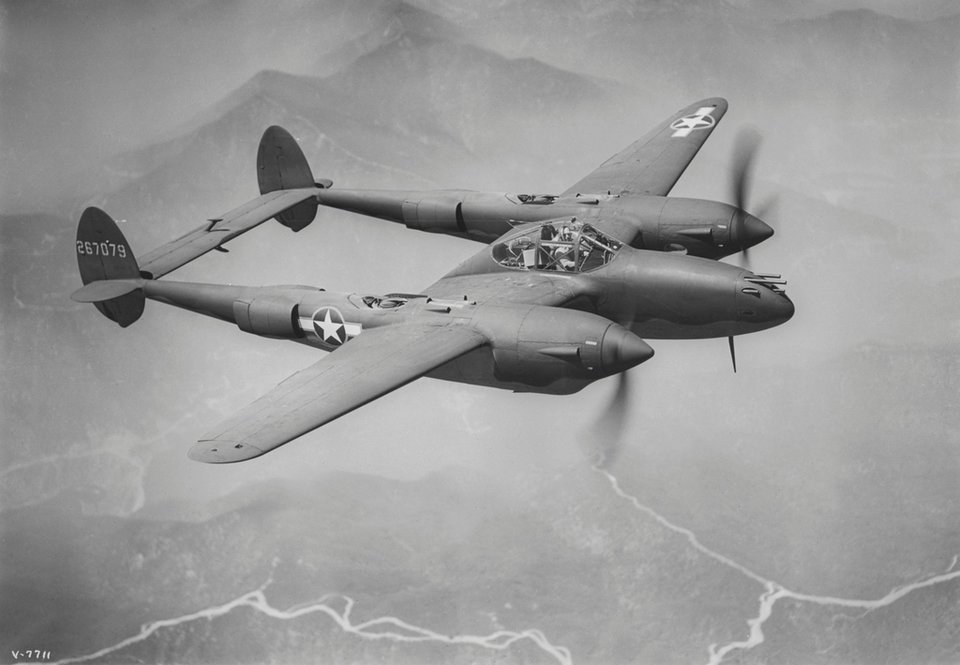
The P-38 Lightning was the primary long-range fighter for the US Army Air Forces in the South West Pacific theatre until the end of WW2
1940-43:
Westland Whirlwind
The first single-seat, twin-engined, cannon-armed fighter of the Royal Air Force, the Westland Whirlwind was one of the fastest combat aircraft in the world when it first flew in 1938. With four Hispano-Suiza HS.404 20mm autocannon in its nose, it was also one of the most heavily armed. Despite these capabilities, development issues with the engines delayed the Whirlwind and limited the number built; only three RAF squadrons were equipped with the Whirlwind during WW2.
They mostly took part in low-level attack sorties across the channel, known as "Rhubarbs" against ground targets and "Roadstead" attacks against shipping. No. 263 squadron flew the last Whirlwind mission in November 1943, before converting to the Hawker Typhoon in December. According to F.K. Mason in 'Royal Air Force Fighters of World War Two, Volume One', “Bearing in mind the relatively small number of Whirlwinds that reached the RAF, the type remained in combat service, virtually unmodified, for a remarkably long time.”
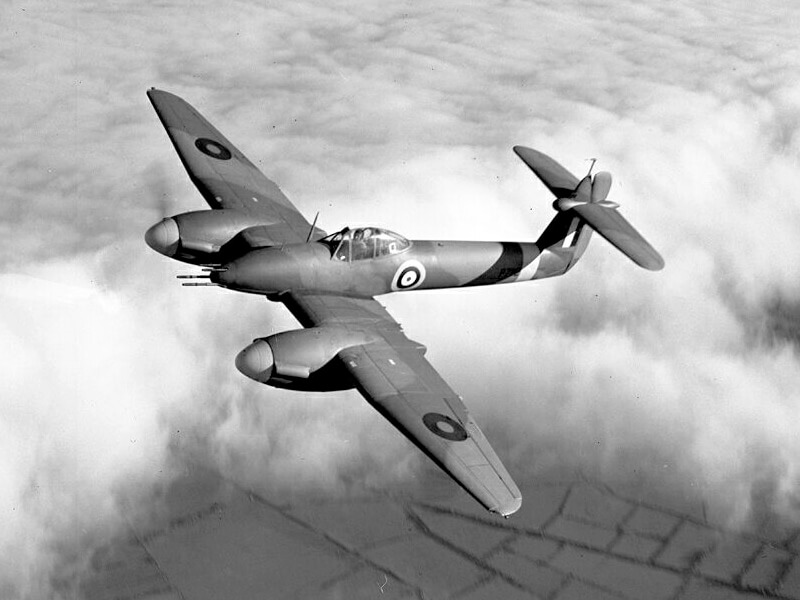
Chief test pilot of Westland, Harald Penrose, flying one of the last production Whirlwinds. Image: Crown Copyright/MoD
1941-43:
Hawker Typhoon
Intended as a medium–high altitude interceptor to replace the Hawker Hurricane, the Typhoon had several design problems but it found success after the Luftwaffe introduced the Focke-Wulf Fw 190 in 1941. Finding that Spitfire Vs were outclassed by the German plane, the Typhoon was rushed into service as the only RAF fighter capable of catching the Focke-Wulf at low altitudes.
The planes were equipped with bombs from late 1942 and RP-3 ground attack rockets were added from late 1943. The addition of these weapons, in combination with the RAF’s growing need for a ground attack fighter, would ultimately see the Typhoon become one of the war's most successful ground-attack aircraft. Hawker worked on an improved version, Typhoon 2, but the differences between the new plane and the original were so great as to warrant a name change to Hawker Tempest.
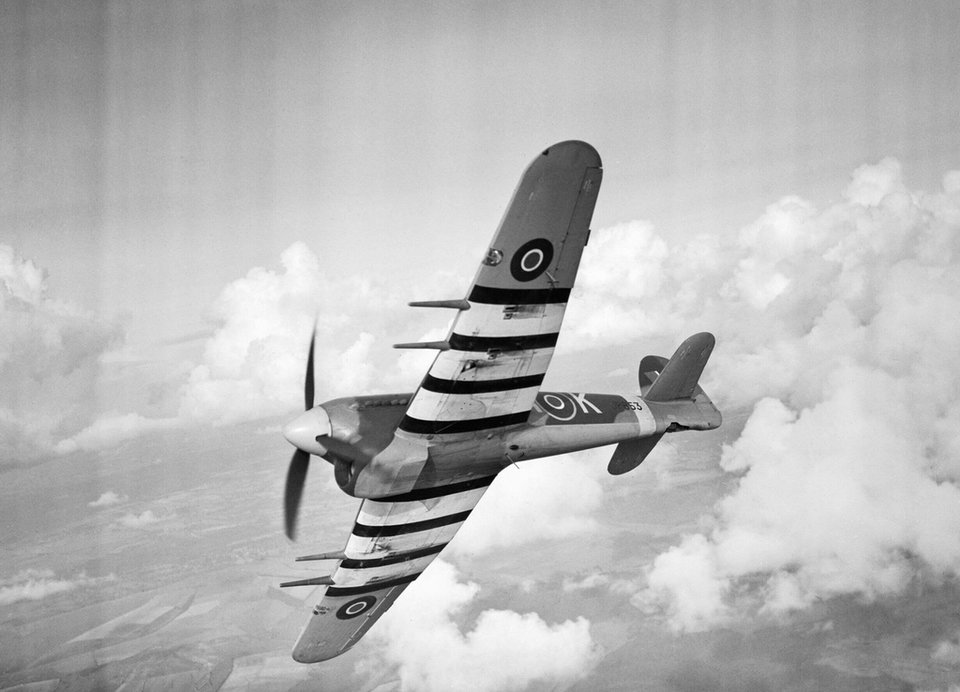
During the early months of service, the Typhoon was frequently mistaken for the German FW190. The identification markings shown here were adopted after various experiments. Image: Crown Copyright/MoD
1944-46:
Republic P-47 Thunderbolt
Produced by the US, the Thunderbolt was one of the heaviest fighters of WW2. It was used by the USAAF and by Allied forces including France, Britain, and Russia. The RAF received two varieties of the Thunderbolt, razorback and bubbletop, and adapted them for ground attack.
Once cleared for use in 1944, the Thunderbolt was put to use against Japanese forces in Burma. Remaining in service until October 1946, the Thunderbolt proved essential during the Japanese breakout attempt at the Sittang Bend and assisted in the bombing of Rangoon. The Fairchild Republic A-10 Thunderbolt II, a ground-attack aircraft currently serving with US forces, takes its name from the P-47.
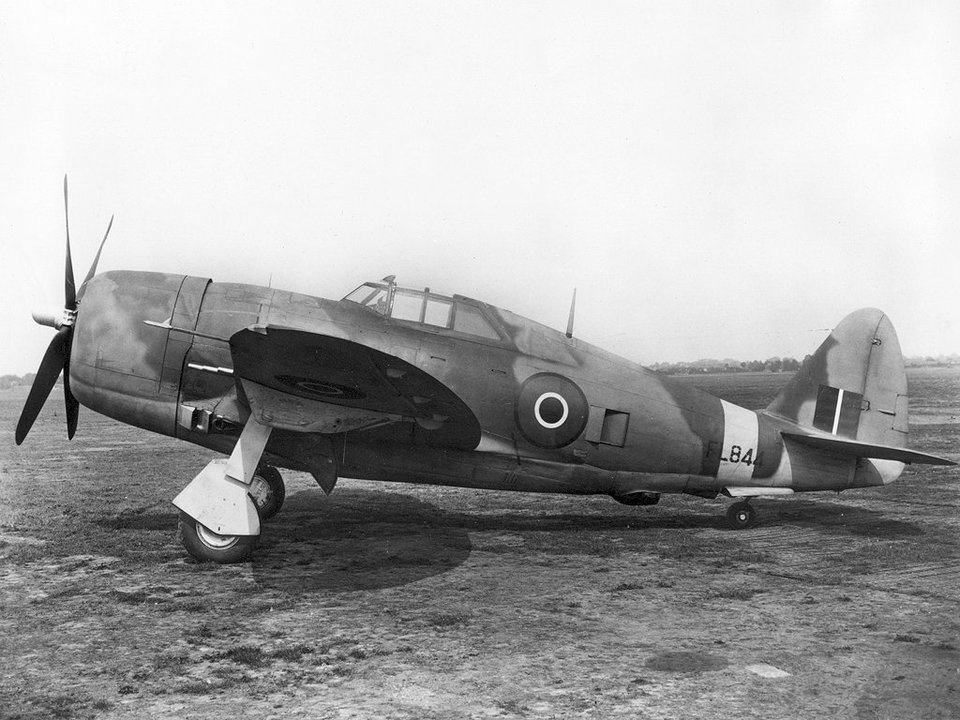
One of the main USAAF fighters of WW2, the Thunderbolt also served with several Allied air forces. Image: Crown Copyright/MoD
1944-51:
Hawker Tempest
Intended to replace the Hawker Typhoon with better performance at higher altitudes, the Tempest turned out to be the fastest single-engine propeller-driven aircraft of the war at low altitude. Entering service in 1944, the Tempest served as a low-level interceptor and a ground-attack platform. It played an important role in countering V-1 flying bombs launched against British cities and supporting Operation Market Garden.
Of the 1,846 V-1 bombs destroyed by aircraft, the Tempest squadrons were responsible for 638. Following the receding of the V-1 threat, the Tempest squadrons were redeployed to the Second Tactical Air Force and proved themselves difficult opponents for the Luftwaffe's Bf 109G and Fw 190 fighters. In air-to-air combat, Tempest units achieved a total estimated success ratio of 7:1.
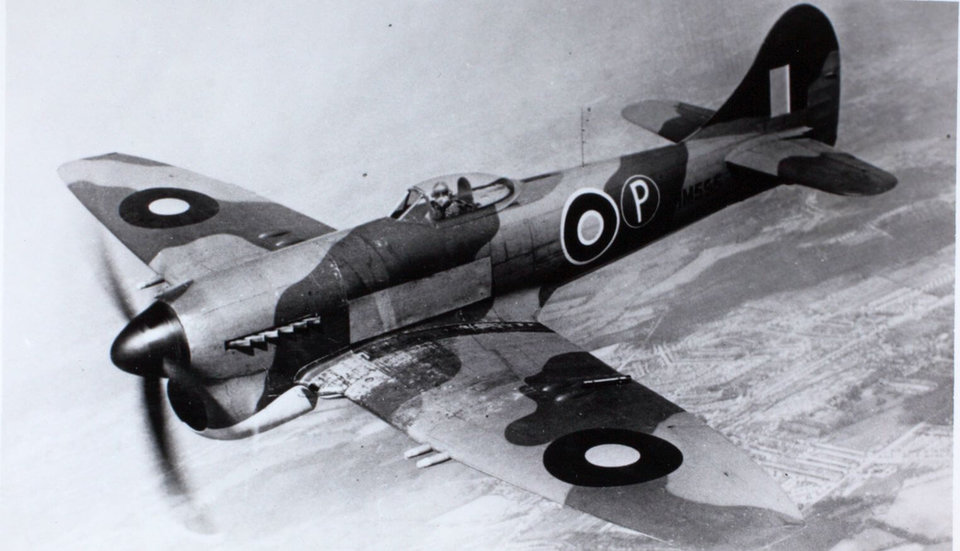
Hawker Tempest Mk V HM595 prototype with a Sabre II engine & enlarged tail.Image: San Diego Air and Space Museum Archive
1959-88:
English Electric Lightning
The English Electric Lightning, marketed as the BAC Lightning following English Electric’s absorption into the British Aircraft Corporation, was the only all-British Mach 2 fighter aircraft. Designed to protect against nuclear-armed supersonic Soviet bombers, its role was expanded to more generally intercept bomber aircraft. Despite serving as the RAF’s primary interceptor craft for more than two decades, it was never required to engage in air-to-air combat with another aircraft.
Plagued in the early months of operation by poor serviceability, the Lightning F.1 was only ordered in small numbers and operated for a short time before being phased out for improved variants. The plane was originally operated as part of Fighter Command before transferring to Strike Command in 1968; with both its main role was air defence for the UK. The Lightning was phased out of service between 1974 and 1988, as alternative fighter designs made the plane’s shortcomings increasingly apparent.
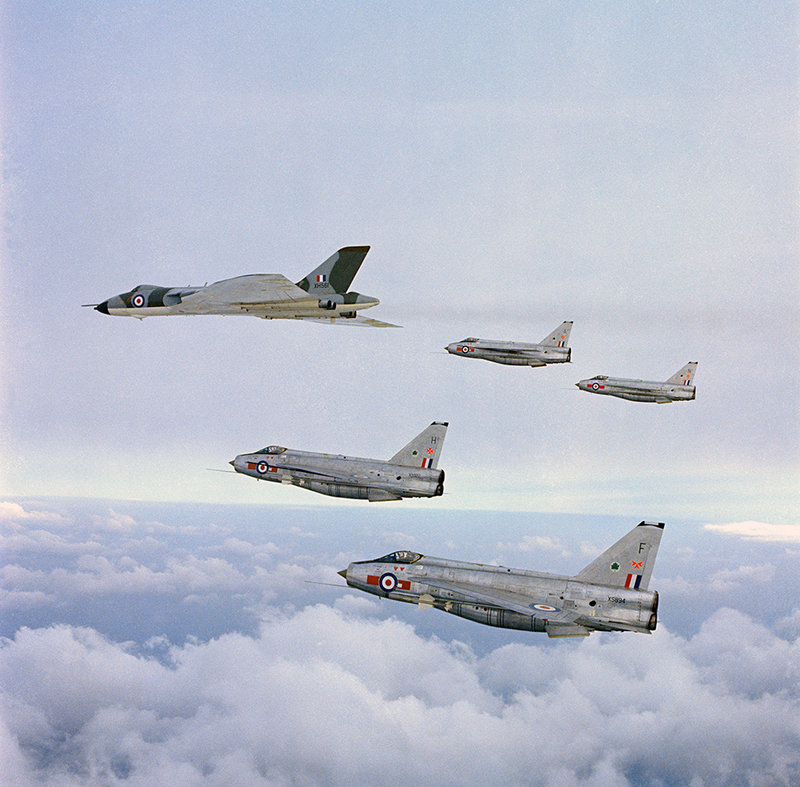
Avro Vulcan B.2 leads four English Electric Lightning F.6s to mark the formation of RAF Strike Command. Image: Crown Copyright/MoD
1979-present:
Panavia Tornado
A multirole combat aircraft, the Tornado was jointly developed and manufactured by Italy, the UK and West Germany. Initially intended to replace the Lockheed F-104 Starfighter, the Multi Role Combat Aircraft working group behind the Tornado was looking for a single aircraft that could perform across roles previously undertaken by a diverse fleet. The family of craft under the Tornado name operated in the 1991 Gulf War and were used in the Bosnian War, Kosovo War, Iraq War, and during the Libyan civil war.
The Tornado debuted in combat as part of British operations in the Gulf War, the ADV variant being used to provide long-range air cover as a deterrent against Iraqi pilots. British Tornados returned to Iraq as part of the 2003 invasion, this time the GR4 variant. This deployment saw the Tornado use the Storm Shadow precision cruise missile for the first time. The same missile was used earlier this year by Tornado fighters in retaliation for a suspected chemical attack on Douma by the Syrian regime.

A Tornado F3 fires defensive flares during OP TELIC in 2003. Image: Crown Copyright/MoD
2007-present:
Eurofighter Typhoon
Development of the Eurofighter Typhoon began in 1983 with the formation of the Future European Fighter Aircraft Programme between the UK, Germany, France, Italy and Spain, but the finalised prototype didn’t make its first flight until March 1994 and the Typhoon only entered operational service in 2003. The programme was significantly delayed by political issues and debates between the contributing nations; and France left the consortium due to disagreements over design authority and operational requirements.
The Typhoon made its combat debut in 2011 during the NATO-led enforcement of a no-fly zone in Libya. It was revealed in March of that year, however, that the RAF lacked the pilots to fly the required number of sorties over Libya and was having to divert personnel from Typhoon training to plug the gaps. Further problems emerged in 2011 when it was found that the Typhoon was suffering from parts shortages. It has been suggested that F-35s may be used to replace the Typhoon by 2030.
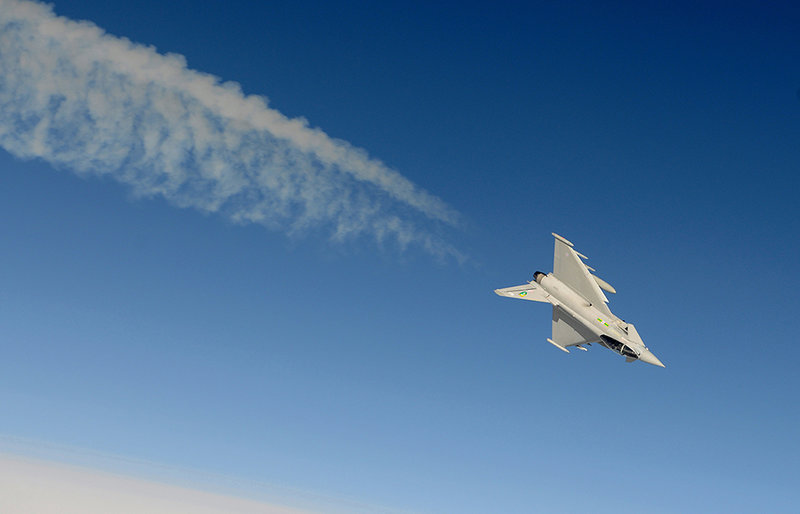
A Royal Air Force Typhoon on Exercise Taurus Mountain. Image: Crown Copyright/MoD
2018:
Lockheed Martin F-35 Lightning II
Descended from the winning design of the Joint Strike Fighter programme, the F-35 has become the most expensive military weapons system in history. A 2014 Politico article highlighted that the programme was "$163bn over budget [and] seven years behind schedule" and Bloomberg reported last year that the F-35’s estimated lifetime cost was now $406.5bn for acquisition of the jets and $1.1tn for operations and maintenance.
The plane was used for combat for the first time this year by Israeli Air Force. The RAF received its first four F-35s in June and has committed to purchasing a total of 138. By 2025, an initial set of 48 F-35x are expected and full strike carrier capability should be achieved by 2020.

The first of the UK’s F-35B Lightning II jets is flown to the UK. Image: Crown Copyright/MoD
In development:
BAE Systems Taranis
Named for the Celtic god of thunder, Taranis is a demonstrator programme for unmanned combat aerial vehicle (UCAV) technology. Designed to fly intercontinental missions, the Taranis first took to the skies in 2013. It will use stealth technology, be controllable via satellite link from anywhere on Earth, and equipped with a variety of weapons for attacking targets in the air and on the ground.
Announced in 2014, a contract between the UK and France will see parts of Taranis combined with France’s Dassault nEUROn UCAV to produce a joint European UCAV. The demonstrator phase seems done for now with three series of flight tests completed, but there has been talk of some version of Taranis being operational post-2030 in concert with manned aircraft. In the meantime, no doubt using lessons learned from Taranis, BAE Systems has unveiled its sixth-generation offering.
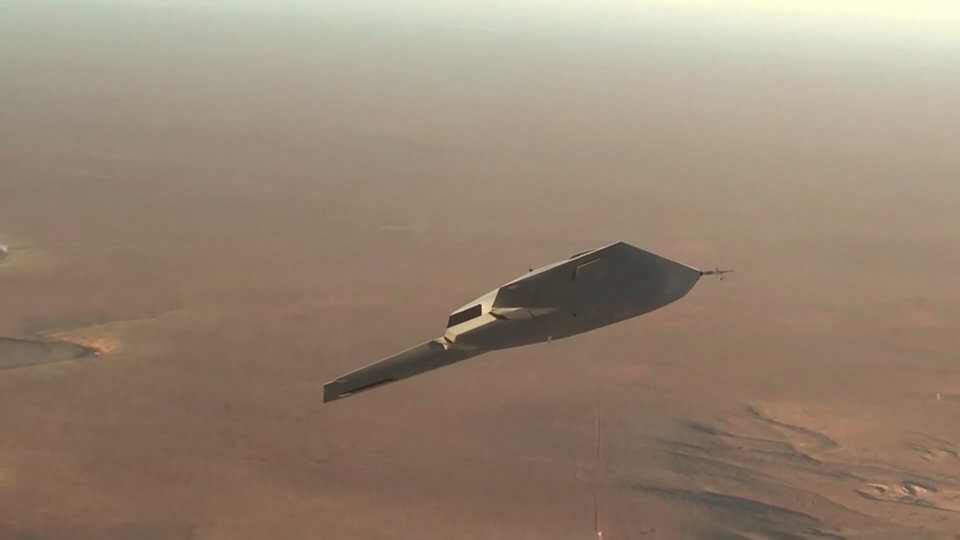
A Taranis prototype during flight testing. Image: BAE Systems